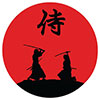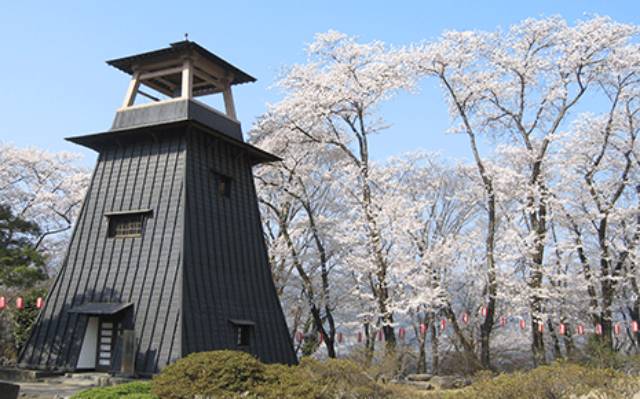
Numata Castle, located in Numata, northern Gunma Prefecture, Japan, has a rich and complex history. During the late Edo period, it served as the residence of the Toki clan, who ruled the Numata Domain. Over the centuries, the castle changed hands multiple times and was the site of significant battles during the Sengoku period.
Origins and Sengoku Period Conflicts
The Numata clan originally controlled the region, with Numata Akiyasu constructing a fortress on the site in 1532. However, in 1580, Sanada Masayuki, a vassal of Takeda Katsuyori, seized the castle. The Numata clan attempted to reclaim their stronghold the following year but suffered devastating losses.
The castle then became a focal point of conflict between the Sanada clan and the Odawara Hōjō clan. In 1589, Toyotomi Hideyoshi sought to mediate the dispute by awarding Numata Castle to the Hōjō and granting nearby Nagurumi Castle to the Sanada. However, Hōjō castellan Inomata Kuninori rejected the settlement and launched an attack on the Sanada. After the fall of the Hōjō at the Battle of Odawara in 1590, the Sanada regained undisputed control over Numata.
Expansion and the Edo Period
In 1597, Sanada Nobuyuki undertook an ambitious reconstruction of Numata Castle, expanding its defenses with stone walls, a grand five-story donjon, and multiple three-story yagura (watchtowers). In 1656, Numata became a separate domain from the Sanada stronghold at Ueda Castle. However, in 1681, Sanada Nobutoshi was dispossessed by the Tokugawa shogunate due to financial misrepresentation, leading to the castle’s destruction.
The domain was later reinstated in 1703 and awarded to Honda Masanaga, who partially rebuilt Numata Castle. While some moats and earthen embankments were restored, neither a new donjon nor yagura were constructed. The castle later came under the rule of the Kuroda clan before being transferred to the Toki clan in 1742. From this period onward, the ruling families resided in a residence within the castle’s third bailey, and the site functioned more as a jin’ya (administrative headquarters) than a military fortress.
Preservation and Legacy
In 1912, Kume Tamenosuke, a former samurai of the Toki clan, purchased the castle site. He later donated it to the town of Numata in 1926, transforming it into a public park. Today, the park features the Ubukata House, an Edo-period structure that once served as a pharmacy in the Numata castle town. Designated as an Important Cultural Property, it now operates as a local history museum, showcasing artifacts, including a scale model of Numata Castle during the Sanada era.
Recognizing its historical significance, Numata Castle was included in the Continued Top 100 Japanese Castles list in 2017. Although little remains of the original structure, its legacy endures as a testament to the region’s turbulent past and the shifting power dynamics of feudal Japan.
See also
-
Marugame Castle
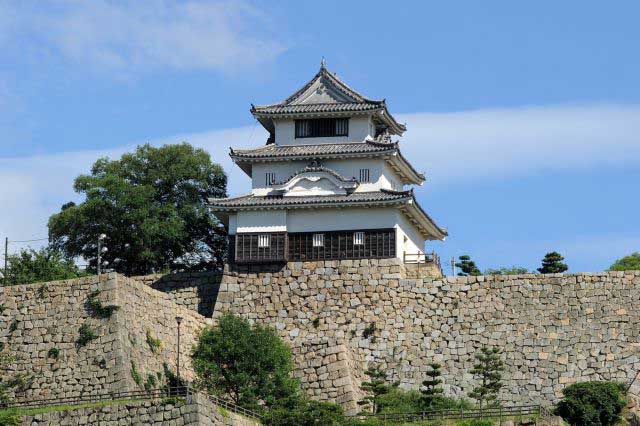
Marugame is part of the so-called “Authentic Dozen,” a group of twelve castles whose donjons have survived to the present day without major reconstructions since the Edo period.
-
Iyo Matsuyama Castle
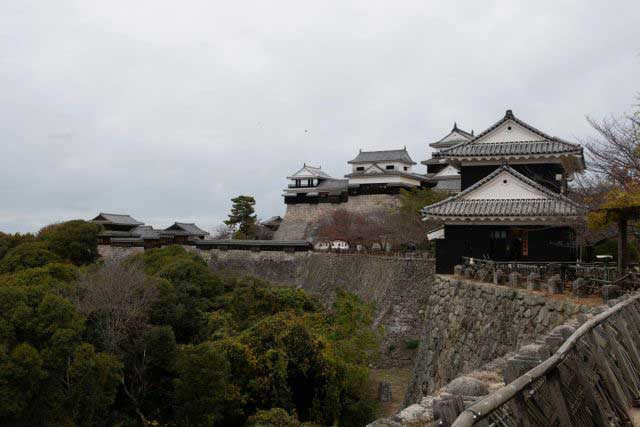
Historically, the center of Iyo Province—corresponding to today’s Ehime Prefecture on the island of Shikoku—was the city of Imabari, while the Matsuyama area was regarded as an agricultural hinterland with broad plains and low hills. During the Muromachi period, the central part of the province was governed by the Kano clan from Yuzuki Castle. With the onset of the Sengoku period, however, this clan lost its former influence and was forced to survive in the shadow of the more powerful Mori and Chōsokabe clans. After Toyotomi Hideyoshi’s forces conquered Shikoku in 1587, the northern part of Iyo Province was granted to Fukushima Masanori, one of the so-called “Seven Spears of Shizugatake.” In 1595, Masanori was transferred to Kiyosu Castle, and the lands around Matsuyama were given to another of the Seven Spears, Katō Yoshiaki, who received Masaki Castle and an income of 60,000 koku of rice.
-
Kanazawa Castle
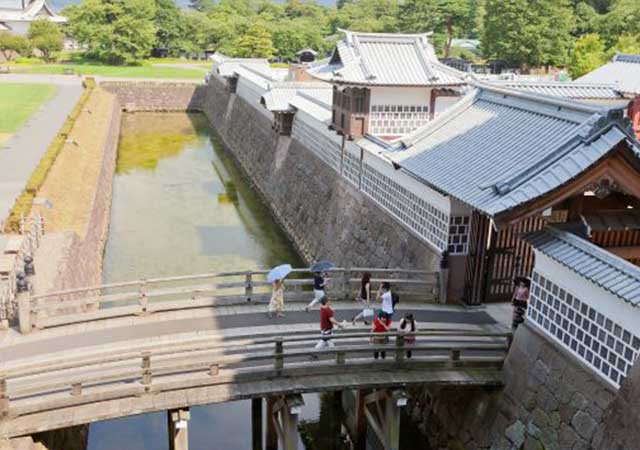
Construction of Kanazawa Castle began in 1580 on the orders of Sakuma Morimasa, a vassal of Oda Nobunaga. The castle was built on the site of the Ikko-ikki sect's Oyama Gobo temple, which is why it is sometimes called Oyama Castle. Morimasa managed to build several moats and begin construction of a castle town. However, after his defeat at the Battle of Shizugatake in 1583, he was executed, and ownership of the castle passed to Maeda Toshiie (1538–1599).
-
Nakatsu Castle
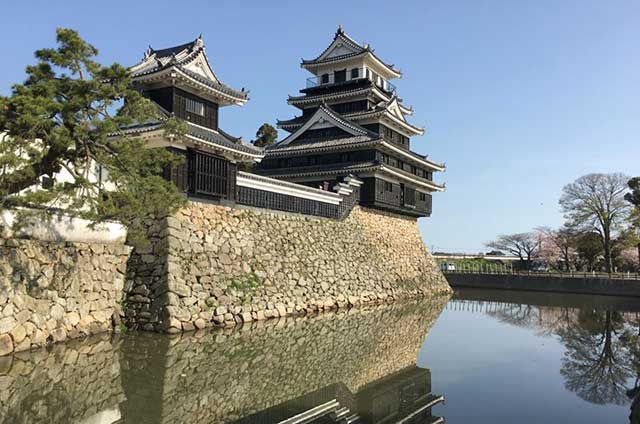
Kuroda Yoshitaka (1546–1604) was one of the closest advisors to the legendary military commander Toyotomi Hideyoshi. He took part in key military campaigns of the late 16th century, including the campaign against Shikoku in 1585 and the campaign against Kyushu in 1587. Later, during the second campaign in Korea, Yoshitaka served as chief advisor to the commander of the invasion forces, Kobayakawa Hideaki. After Hideyoshi's death, he swore allegiance to Tokugawa Ieyasu, thereby securing his influence and patronage under Japan's new leader.
-
Edo Castle
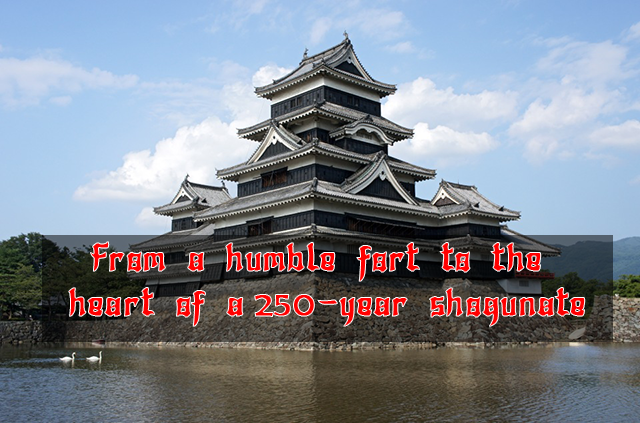
The history of Edo Castle dates back to the Heian period, when the Edo clan built a small fort on this site. In 1457, the vassal of the Uesugi clan, Ota Dokan (1432–1486), constructed a full-scale castle here. Internal conflicts weakened the Uesugi clan, and in 1524, Ota Dokan’s grandson, Ota Yasutaka, surrendered the castle without resistance to the forces of Hojo Soun, the ambitious leader of the Hojo clan. While Odawara Castle remained the clan's main stronghold, Edo was considered a key strategic fortress.
-
Samurai Museum Shinjuku

Situated in the vibrant district of Shinjuku, the museum showcases an extensive collection of samurai armor, weapons, and cultural artifacts spanning from the Kamakura to the Edo period. The exhibits aim to convey the samurai's unwavering commitment to honor and discipline, reflecting how their spirit continues to influence modern Japanese culture.
-
Anjo Castle

Anjo Castle was built on a slight elevation at the edge of the Hekikai Plateau, about 2 kilometers southeast of present-day central Anjo City in Aichi Prefecture. Today, the surrounding area thrives on large-scale agriculture and automotive manufacturing, utilizing the expansive flatlands and its proximity to the Nagoya region.
-
Iwabitsu Castle
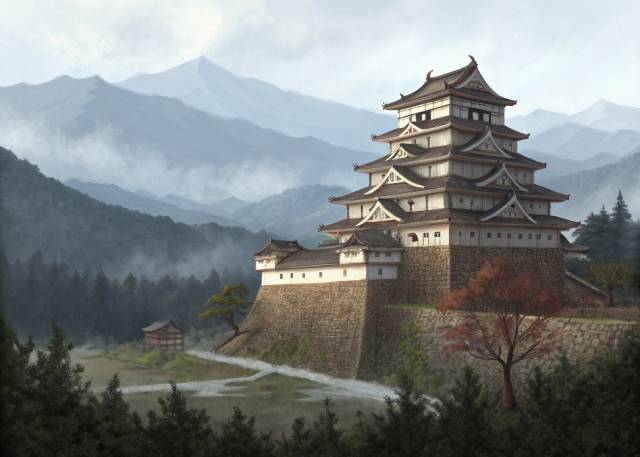
Iwabitsu Castle is a yamashiro-style (mountain) castle located atop Mount Iwabitsu in Higashiagatsuma, Gunma Prefecture, Japan. Recognized for its historical significance, its ruins have been protected as a National Historic Site since 2019.

